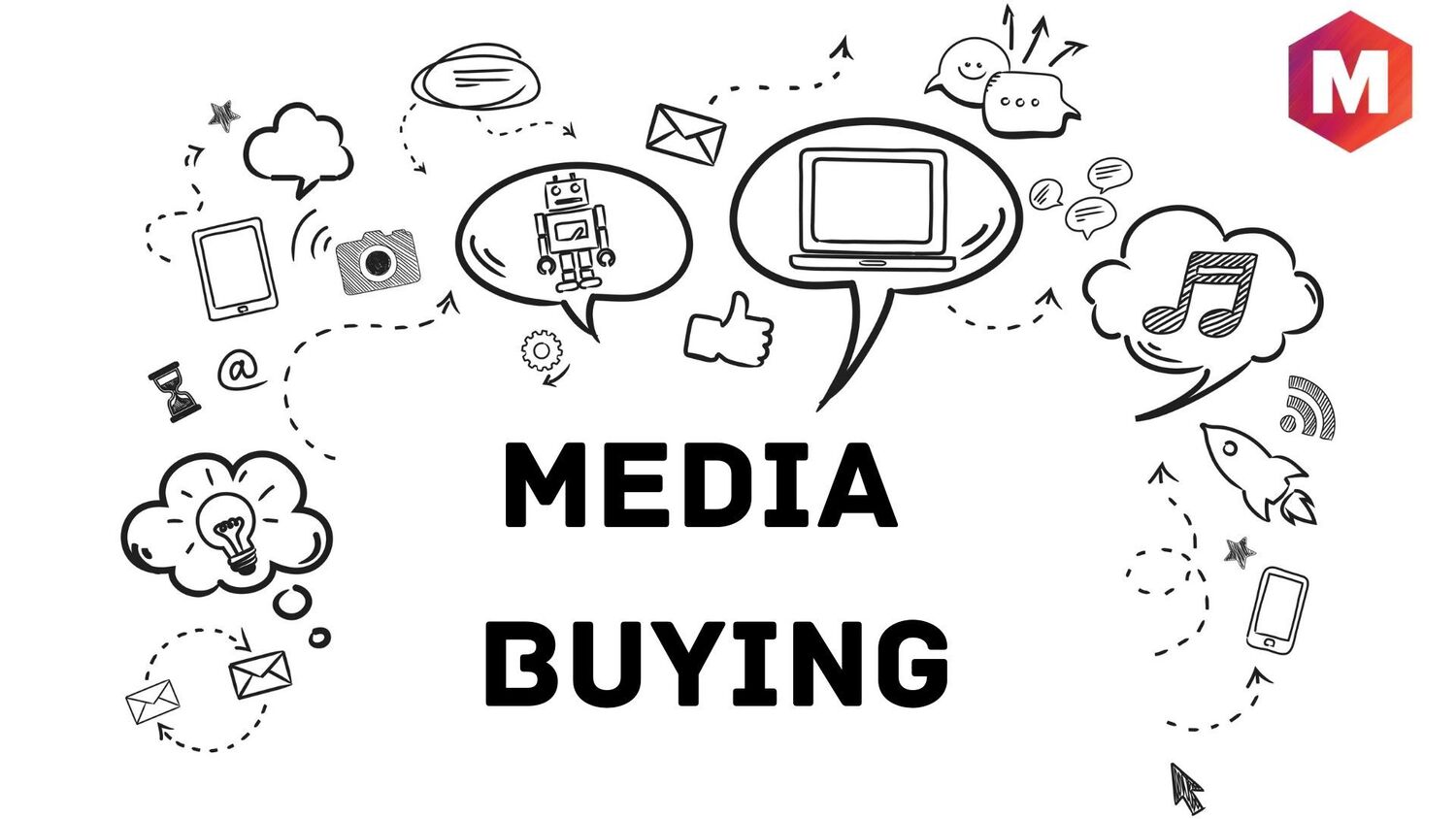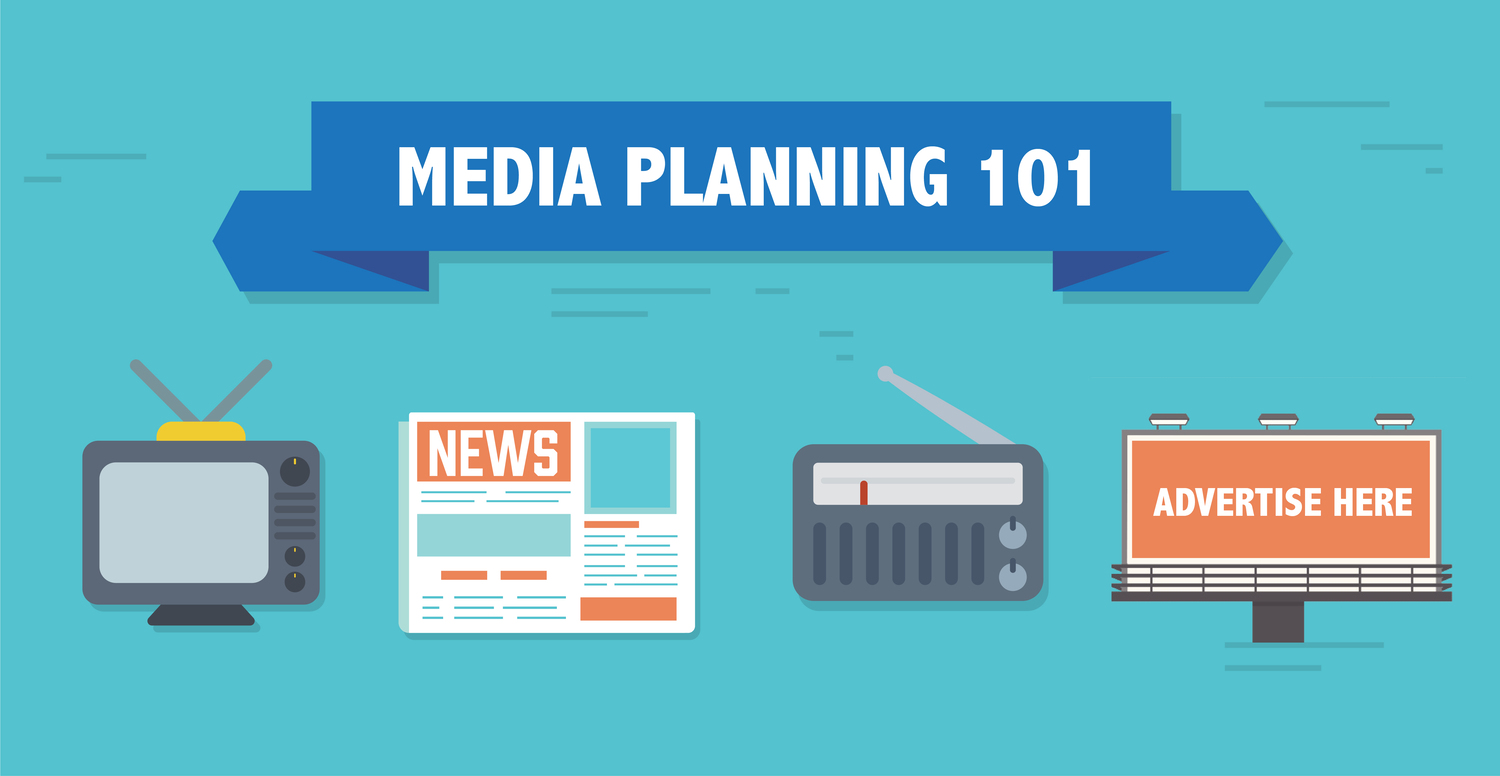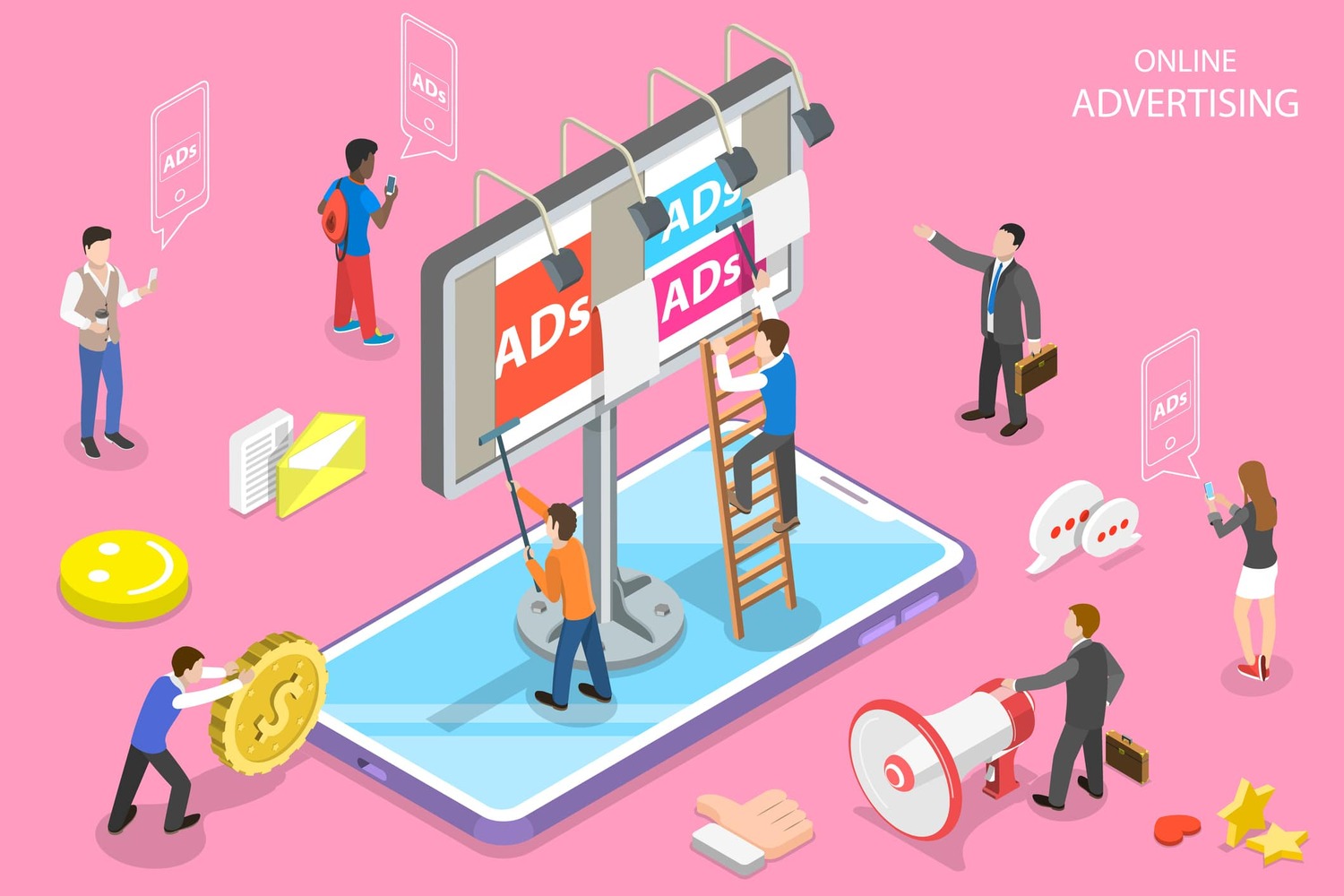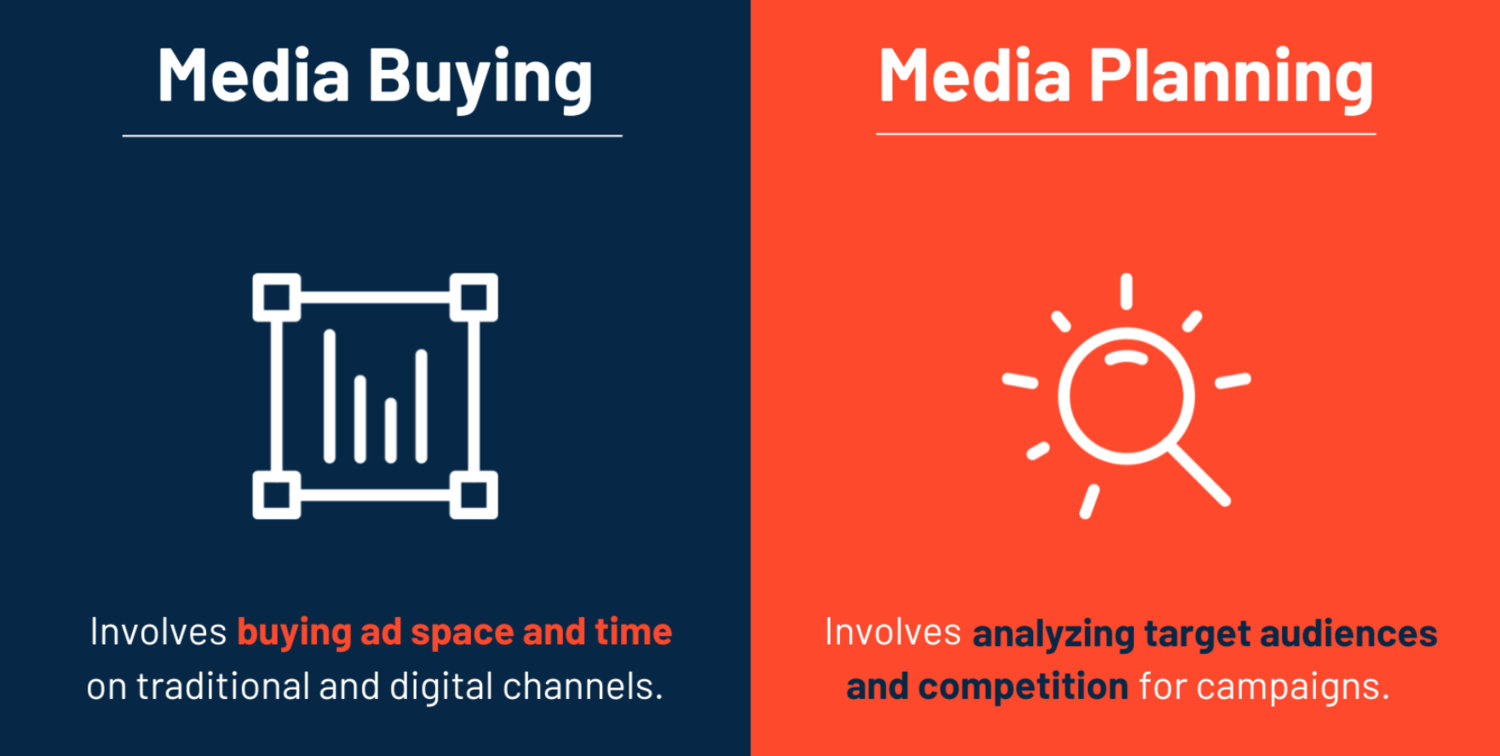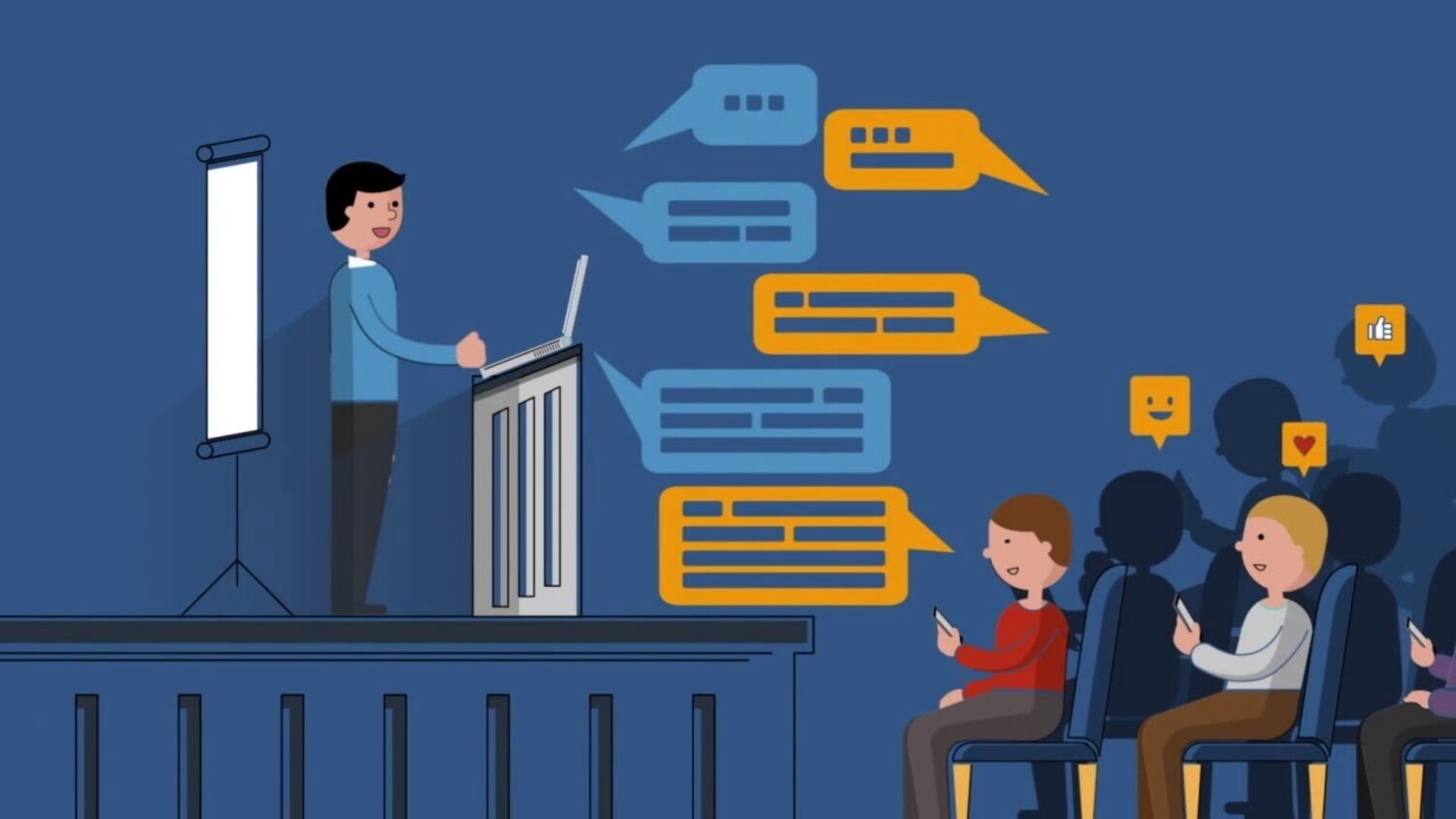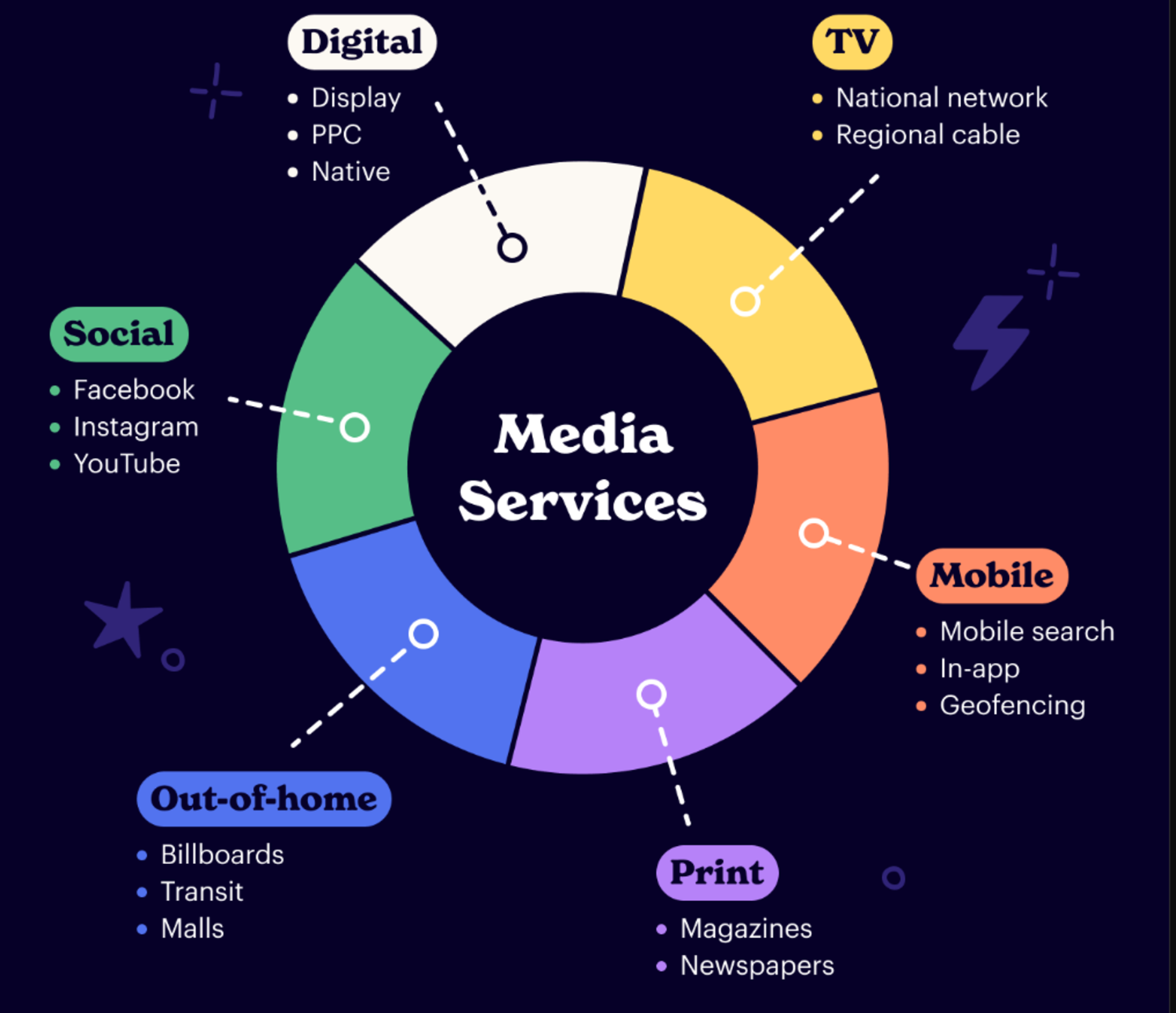You’ve seen advertisements for paints, soaps, food items, etc on television. Also, you must have seen your favorite YouTuber promote a product on his YouTube channel. This helps boost the company’s growth as people get influenced by these advertisements. This is called Media Buying.
Media buying is the purchase of advertising from a media company such as a television station, newspaper, magazine, or blog. It purchases ad space on digital and offline platforms like blogs, YouTube, newspapers, radio, and TV. It is used as a paid marketing effort.
Let’s study media planning and media buying in detail. Continue reading as you will be able to understand why Media Buying is essential.
What separates media planning from media buying
Media buying and media planning are occasionally used synonymously by marketers. They are various components of the advertising puzzle, yet they work well together.
Media planning
Media planning is the first step in the media buying process; it guides negotiating and purchasing advertising. Before buying and launching commercials, advertisers engage in media planning, a research-based strategy process that aims to improve the return on investment (ROI).
A media plan includes
- Aims and objectives of the campaign: Objectives include brand recognition, interest, conversion, or loyalty.
- Marketing key performance indicators (KPIs) and metrics: Aims and objectives affect this. Examples of KPIs include impressions, app installs, store visits, video views, ad engagement, website visits, repeat purchases, sign-ups for email lists, sales, and more.
- Audience: specifics about the target audience for the campaign
- Budget: The maximum amount planned to spend on the campaign.
- Insights from relevant market research: This will influence the media mix, messages, and audience choices.
- Combination of media: The optimal media mix to use to reach important consumers at the lowest cost
- Timeline: Including time to write, create, and create
- Measuring tools: How and where will you track the success of your campaigns?
Media Buying
Without sound media planning, media buyers would have no direction and a potentially unsuccessful media buy as a result. The media plan is put into action through media buying, which focuses on acquiring the ideal mix of media to successfully achieve campaign objectives.
There are numerous ways to buy media:
- Direct: Buying advertisements from a source or channel directly
- Network: Bidding on and buying ad space using supply-side and demand-side platforms.
- Programmatic: The technology used to buy and sell digital advertisements is programmatic.
Why is buying media significant?
Because correctly selected media can impact a campaign’s outcome, media procurement is essential. For the intended audiences to see advertisements, they must be placed where, when, and how often they should be. Having interesting language and imagery is insufficient. Advertising can be purchased across a range of media by media buyers.
Experienced media buys can also negotiate with media sources or channels to ensure that marketers enhance performance concerning campaign goals.
Media buyers who excel at this can:
- Achieve the best outcomes for their budget by generating the most impressions, or views, of an advertisement at the lowest possible cost.
- Locate the appropriate ad locations.
- To increase the effectiveness of a campaign, receive “value added” impressions at no additional expense. In addition to the anticipated from TV advertising, a company can, for instance, get a particular amount of internet impressions.
When buying media, take these things into account.
When purchasing media or negotiating media deals, four important variables notable, these are:
Defend your brand
To successfully position, purchase, and reconcile the ad spend, companies must collaborate with an outside media buyer who is knowledgeable, reliable and has strong connections with outlets and publishers.
Boost your media buying
To enhance performance, optimization is importance to modify frequency and bids and block particular domains. One of the numerous advantages of programmatic ad buying is that it performs optimization for you by default. It only requires setting up the programmatic campaign with the appropriate parameters.
Achieve cohesion
To maximise the effectiveness of your marketing mix and creatives and to maximise the return on your advertising investment. Instead of using isolated messages and creatives, tell a cohesive tale across all of your media channels.
Prioritize measurement
For the campaign to be optimised overall, it is crucial to know which campaigns and creatives are producing the best outcomes at the lowest cost. Digital media offers the advantage of being able to assess and adjust campaigns while they are running rather than waiting for them to end to analyse results.
But, What is Media Buying?
Media buying is a modern way of advertising. It is a term for describing the nature of commercials and their output. The media buying process encloses various small steps and moves that help in the overall success of advertising campaigns. Thus, media buying is a collective running of steps, where after careful research and examination, ads are made public on carefully sought platforms, which over time run, and meet the campaign’s goals.
The process is accompanied exclusively by careful planning of strategies, required budgeting, and placing ads in suitable media settings. Media buying may either be through Television, Radio broadcasting, or Online ad placement.
See How to be a Successful Digital Media Buyer.
The most sought-after, popular, and beneficial mode of media placing today is Social networking.
The media buying process is a paid venture under media, where the brand ( the one that wants advertising ) select advertisers that can help it to reach the masses through select advertisement, at select slots of time so that maximum awareness about the brand can be spread, along with an increase in popularity. It goes without saying that all these ideas aim at increasing sales. Hence, media is hired for maximum winnings of the public attention.
But when putting this into practical steps, it is not as easy as it seems. So here are some not so tough steps for you that will guide you in the media buying process:-
The First Stage: Media buying Planning (Before-Launch)
The choice of the type of advertisement can not be taken in a single day. There is a need for well-planned guide and initiative steps. In the initial stage, media buying requires detailed research and study of related aspects. Before you invest your money in any field, it is your obligation to conduct a thorough examination.
The things you need to keep in your mind while in the pre-launch stage are as such:-
Identifying Audience
Before finalizing any decision about media buying, always keep in mind your foremost aim. You need to check that you are on the right track before heading to the next steps. Check who are the people you aim to target. The preferences, taste, background, income, etc. all must be kept in view. After getting to know your targeted audience, imagine all the possible ways how you can reach them. Also, learn the reason why they may choose your product over any other. You can use this point as your strength.
Examine Rivals
It is simple economics that before ticking over any strategy, one must always check out the opponent. It will rescue you from many unseen troubles. Conduct complete research about your present competitors in the industry.
Design your Strategy
In the media buying process, it is important to form a media buying strategy. You must formulate and plan and formulate the media buying strategy beforehand. So that when you buy media, you will be clear about your stage and platform. There are different ways to reach an audience.
It is your choice whether you want your product ad on print media, such as brochures, newspapers, or digital advertisements. In media buying, there are multiple channels through which media buyers can advertise. Each channel or type has its unique and different influence on the targeted viewers.
Budgeting
It is one of the significant factors that directly impact the media buying process. Budgeting plays an important role in determining the type of media buying process and its further steps. The next step after selecting the audience, and media type, is setting the budget. Assume your expenditure and the estimated amount of return on the money invested. Keep checking the records from time to time and match the results with the standards.
It is worth noticing that exposure and audience numbers have a lot to do with the media packs that you will receive. Never be afraid to go a bit overboard with the budget, because good publicity will sure BENEFIT YOU in the end.
The Second Stage: Launching operation
It is the main part of the media buying strategy, where the planned media buying process will launch. At this point, the key factor is to check that the launch is effective and efficient. It is the time when the effectiveness of media buying is known. The things one must consider here are-
Assure Right Delivery
As a media buyer, you must check that the message you want to deliver is being given in its accurate terms. It is mandatory that the content is highly relatable to the needs and lives of the audience. The progress must also be tracked and see that the aim of buying media is fulfilling.
Tracking
It will be worthless if you spend your hours and hours of research, analysis, and evaluation along with money without keeping track of what this all has benefited you. Only the detailed and scrutinizing interpretation of each penny used for media advertising compared to the sales increment ( or goal fulfillment) will help you know the rate of the campaign’s success. Make sure that you regularly carry a side-by-side analysis of the public perception of the services you deliver. With this, you will understand shortcomings, if any. Also, it will be easier to conduct further advertising campaigns.
Working on the Audience feedback
You need to make sure that you remain in touch with the consumers’ demands. It may happen that your ads do not reach the number of viewers you initially thought they would reach. And hence not receive a worthy response for your brand.
You can adjust this by a mere change in the time of your ads’ running, or by making small changes in the layout of the campaign.
Always pay attention to what your audience has to say!
Scrutinizing Competitors
Competition is both a boon and a curse in the area of advertising. Now, when there is no limit on products and services similar to users, it has become easy for you to understand your footing in a place inhabited by many. Understanding this serves as an efficient media buying strategy.
If you sense that a rival is getting more attention, try to comprehend the audience trends they follow. And avoid implementing the steps of those who are not performing that well. Once you do this, readily modify your campaign in which direction is necessary. It’s never too late to reach the right place.
The Final Stage: Contemplation of the Past and the Future
There is never only a single name that is being advertised by any media platform. Your adversaries might be getting the same amount of exposure you are receiving. Consequently, the dice may roll over in your favor or someone else’s. But this is not where it ends.
Even after the launch of the advertisement, you need to work upon the exposure, response, and the space that you have made throughout the campaign. Whether it may be overwhelming or under, there is always room for improvement. Calculate if you have gotten the aspired amount of views, ad clicks, or sales.
No venture lands success in its first set of attempts. But if yours do, you need to build more trust and keep striving until you become a household name.
Which Kind of Media Buying is the best?
The Millennials spend most of their free time on the internet. It can be in the form of watching videos, playing games, googling, chatting, or anything else. So, the generation that spends most of the time online can reach easily through the screen. The best possible way to directly reach your customers is digital media, or you can also call it e-advertising.
It is the latest trend to post ads on social networking sites, emails, and in between video playing. The audience, in this way, comes in direct contact with the message given and has a high chance of influence.
Another hassle-free task that you can easily accomplish is surveying the interests of your potential viewers and customers through the internet. It is extremely easy to extract data online and target that set of people who have liked the areas that your brand provides. This helps you narrow down your expenditure without compromising on the exposure of your products and services.
See Also: Top 10 Benefits of Digital Marketing & Why Should You Invest In It?
FAQs
What is media buying?
It is the process of purchasing advertising space.
What are the types of media buying?
There are two types of media buying: direct and programmatic media buying.
What is direct media buying?
Direct media buying is when the ad seller and the advertising space are in direct contact with each other.
Conclusion
No amount of planning and analysis can make you ready for circumstances that are unseen. Keep a few additional ideas for your advertisement and a bit of your budget aside so that you can always cope up if you see shortcomings.
But, also remember that the risk you take will directly be seen in the outcome of your campaign. Learn from your campaigns. Have ideas following a single line of thought where you can build a whole story relating to your services. Set daily, weekly, and monthly analysis periods where you ponder overall road maps covered and hits achieved. Make use of Internet trend sets and add them to your media buying strategy. Whatever you do, let your previous works be your muses and plan efficiently.
Begin planning today, and let media buying assist you in reaching heights!


